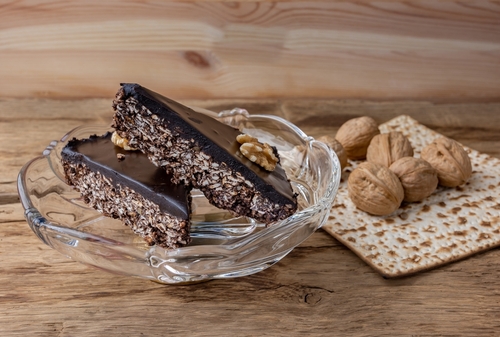While everyone is busy with Yom Kippur and Succos and all the mitzvos and preparations that go along with them, the latter part of Succos— Hoshana Rabbah— can get a bit neglected.
As far back in our early history as we go, Succos was a time of great rejoicing. It is “Zman Simchoseinu” after all, the “time of our happiness.” The first Temple inauguration was in progress during Yom Kippur and Succos. Because of the great importance of the opening ceremonies of the Temple, even the fast of Yom Kippur was suspended that year.
However, in spite of it being a time of great rejoicing, not unlike Yom Kippur, there always been an air of solemnity accompanying the great festival of Succos. This solemn atmosphere is underlined even more so on the seventh day – which we call Hoshana Rabbah.
This is evident from the Mishnah in Maseches Succah which states that they set up a huge willow branch near the altar and the people would circle it once, every day of Succos. On the seventh day, they would circle the alter seven times. It is for this reason that Hoshana Rabbah is also called “Yom Ho’arovo” or Day of the Willows.
Our sages, may their memories be blessed, tell us that this observance was a prayer for rain. This is also obvious from all the prayers we say after hallel (prayers of thanksgiving) on the latter days of Chol Hamoed, and even more so on Hoshana Rabbah itself, where rain is a major theme. For anyone living in the Middle East where the winter rains are life-giving, you know that praying for rain was literally synonymous with praying for life itself. The truth is, that the entire holiday of Succos is really both: thanksgiving for the sustenance of the previous year and a period when we beseech Hashem for our livelihood in the coming year. The prayer for rain, however, is postponed towards the end of the festival so that the rain will not mar the festivities.
As a result, Hoshana Rabbah has become the day that is the prayer component of the Yom Tov of Succos. As we progress through the generations, we find more and more things added to the solemnity of the prayers. Starting already in the times of the prophets, a custom of beating the willow branches against the floor was instituted. Some say that the reason for this is in fact counterintuitive: It is so that one should not think that the prayers are directed to the willow branch; rather it is to Hashem – with the willow as a physical symbol of prayer.
Based on the above, different customs developed, including wearing a white kittel, adding some of the nusach of the Yomim Noraim to the prayers, and in general, viewing this great day as somewhat of a final sequel of the Days of Awe.
In short, Hoshana Rabbah is a truly unique blend of the solemnity of Yom Kippur along with the simcha of Succos. Hence, we wish a “Good Kvittel”, which is a “note” appended to the verdict of the Days of Awe.
Now here comes an interesting twist. Our sages seem to view the banging of the Arovos on Hoshana Rabbah as so important that this it warrants manipulating the calendar so that Hoshana Rabbah should not fall on Shabbos. The other point warranting manipulation is to avoid Yom Kippur falling on a Friday or a Sunday. This is done by adding or subtracting one day in the months of Cheshvan and Kislev of the previous year.
The shifting of the calendar so that Yom Kippur should not fall before or after Shabbos, although remarkable, is easier to explain. The reason is either there should be fresh vegetables available or that the deceased should not putrefy – a difficult challenge if there is a Shabbos and a Yom Kippur consecutively.
However, the fact that Hoshana Rabbah not falling on Shabbos should be a valid reason to move what should otherwise be set in stone is truly astounding. The shofar blowing on Rosh Hashanah which is min hatorah (ordained by the Torah), is waived if the holiday falls on Shabbos, and equally so, the shaking of the Four Species is also overridden when it falls on Shabbos. In comparison, “Yom Ho’arovo should not fall on Shabbos.” That is the rule. But why? It is only a custom! And the beating that causes leaves to fall off is not even a biblical transgression.
Many explanations have been offered. One reason we offer here is that back in the day, when idol worship was rampant, one could have misconstrued the usage of the willow branch as idol worship, which was counteracted by beating the aravos to show that it really is nothing in its own right. This, we understand, is far more important than anything else. This then became a very basic part of the calendar and was fixed for posterity, on its own special day.
We wish our readers and all of Klal Yisroel a Chag Sameach and a good Kvittel!
Submitted by Rabbi Gavriel Lamm


